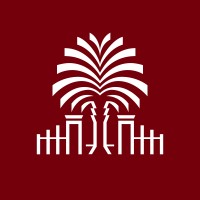
Stephen F. Austin State University Company Cyber Security Posture
sfasu.eduStephen F. Austin State University is a comprehensive, regional institution located in Nacogdoches, Texas. The university enrolls approximately 13,000 students and offers 83 undergraduate majors and 120 areas of study within six academic colleges - business, education, fine arts, forestry and agriculture, sciences and mathematics, and liberal and applied arts. SFA offers degree programs both online and on its beautifully wooded campus nestled in the heart of Texas Forest Country. Accredited by the Southern Association of Colleges and Schools, SFA is ranked a Tier 1 Regional University by U.S. News and World Report. SFA provides the academic breadth of a state university with the personalized attention of a private school. With a student-to-faculty ration of 19:1 and an average class size of 26, professors get to know their students and provide classroom instruction tailored to each student's needs and goals. Smaller classes combined with hands-on study, internships and research opportunities give students valuable experience that translates to their chosen career paths.
SFASU Company Details
sfasu
2516 employees
82696
611
Higher Education
sfasu.edu
Scan still pending
STE_8175454
In-progress
Between 800 and 900
This score is AI-generated and less favored by cyber insurers, who prefer the TPRM score.
 SFASU Global Score
SFASU Global Score.png)

Stephen F. Austin State University Company Scoring based on AI Models
| Model Name | Date | Description | Current Score Difference | Score |
|---|---|---|---|---|
| AVERAGE-Industry | 03-12-2025 | This score represents the average cybersecurity rating of companies already scanned within the same industry. It provides a benchmark to compare an individual company's security posture against its industry peers. | N/A | Between 800 and 900 |
Stephen F. Austin State University Company Cyber Security News & History
| Entity | Type | Severity | Impact | Seen | Url ID | Details | View |
|---|---|---|---|---|---|---|---|
| Stephen F. Austin State University | Breach | 60 | 3 | 06/2023 | STE55125623 | Link | |
Rankiteo Explanation : Attack with significant impact with internal employee data leaksDescription: After suffering a cyberattack, administrators at Stephen F. Austin State University are still attempting to fully restore email and other internet services for the campus' 11,600 students. Federal Bureau of Investigation investigation the event is verified by university spokesperson Graham Garner. Despite the fact that the institution has reestablished internet connectivity and the university's online teaching portal, students and professors claim that the breach caused significant interruptions, particularly for those attending summer courses. The school disabled internet connection when it was identified in order to prevent any additional system intrusions. | |||||||
Stephen F. Austin State University Company Subsidiaries

Stephen F. Austin State University is a comprehensive, regional institution located in Nacogdoches, Texas. The university enrolls approximately 13,000 students and offers 83 undergraduate majors and 120 areas of study within six academic colleges - business, education, fine arts, forestry and agriculture, sciences and mathematics, and liberal and applied arts. SFA offers degree programs both online and on its beautifully wooded campus nestled in the heart of Texas Forest Country. Accredited by the Southern Association of Colleges and Schools, SFA is ranked a Tier 1 Regional University by U.S. News and World Report. SFA provides the academic breadth of a state university with the personalized attention of a private school. With a student-to-faculty ration of 19:1 and an average class size of 26, professors get to know their students and provide classroom instruction tailored to each student's needs and goals. Smaller classes combined with hands-on study, internships and research opportunities give students valuable experience that translates to their chosen career paths.
Access Data Using Our API

Get company history
.png)
SFASU Cyber Security News
Stephen F. Austin State University still recovering from cyberattack
The East Texas university says the FBI is investigating the cyberattack, which drew the school to a halt about 10 days ago, shutting down ...
Notable Alumni | Computer Science
Trevor Vardeman is a highly skilled software engineer at Advizex, a leading IT solutions provider delivering cutting edge solutions to diverse industries.
Exciting new additions to District leadership | https://w3.lisd.org/
Longview ISD is proud to announce the addition of two new leaders and the promotion of a familiar face within the district.
UCA selects Bisping as College of Business dean
The University of Central Arkansas has announced Dr. Tim Bisping as the new dean of the UCA College of Business. Bisping will begin on July ...
Teresa MacCartney named interim president of Georgia Southwestern State University
Chancellor Sonny Perdue has selected USG Chief Operating Officer Teresa MacCartney to serve as interim president of Georgia Southwestern State University.
Texas university hit by cyberattack over weekend
Stephen F. Austin State University is recovering from a cyberattack that has taken its digital services offline.
Stephen F. Austin State University officially becomes 14th member of the UT System
Stephen F. Austin State University officially became the 14th member of The University of Texas System.
SFA computer science students attend cyber security conference
Students from Stephen F. Austin State University's Department of Computer Science recently attended the Women in Cybersecurity conference in Chicago.
Some local teachers' personal data leaked in cyber hack
Lumberton ISD is investigating a mid-June cybersecurity incident in which 300 gigabytes of personal data were leaked Saturday by an ...

SFASU Similar Companies

Facultad de Ciencias Agropecuarias UNC
La actual Facultad de Ciencias Agropecuarias se creó el 21 de marzo de 1966 según Ordenanza N° 4/66 del H.C.S. con la denominación de Instituto de Ciencias Agronómicas, dependiendo directamente del Rector y del Consejo Superior. Se trata de una Institución de corta vida, respecto a otras Faculta

University of South Carolina
With thriving academic and research excellence and a lively, welcoming student experience, the University of South Carolina brings the opportunities of higher education to new generations. South Carolina's unrivaled college experience has been sought by students, faculty and academic researchers fo

Columbia University
For more than 250 years, Columbia has been a leader in higher education in the nation and around the world. At the core of our wide range of academic inquiry is the commitment to attract and engage the best minds in pursuit of greater human understanding, pioneering new discoveries and service to so

Laureate Education, Inc.
For more than 20 years, we have remained committed to making a positive impact in the communities we serve, by providing accessible, high-quality undergraduate, graduate, and specialized degree programs. We know that when our students succeed, countries prosper, and societies benefit. We take very

Carnegie Mellon University
Carnegie Mellon University founder Andrew Carnegie said: "My heart is in the work." No statement better captures the passion and drive of our people to make a real difference. At Carnegie Mellon, we're not afraid of the work. Our educational environment creates problem solvers, drivers of

Virginia Tech
Dedicated to its motto, Ut Prosim (That I May Serve), Virginia Tech takes a hands-on, engaging approach to education, preparing scholars to be leaders in their fields and communities. As the commonwealth’s most comprehensive university and its leading research institution, Virginia Tech offers 215 u

Frequently Asked Questions (FAQ) on Cybersecurity Incidents
SFASU CyberSecurity History Information
Total Incidents: According to Rankiteo, SFASU has faced 1 incidents in the past.
Incident Types: The types of cybersecurity incidents that have occurred include ['Breach'].
Total Financial Loss: The total financial loss from these incidents is estimated to be {total_financial_loss}.
Cybersecurity Posture: The company's overall cybersecurity posture is described as Stephen F. Austin State University is a comprehensive, regional institution located in Nacogdoches, Texas. The university enrolls approximately 13,000 students and offers 83 undergraduate majors and 120 areas of study within six academic colleges - business, education, fine arts, forestry and agriculture, sciences and mathematics, and liberal and applied arts. SFA offers degree programs both online and on its beautifully wooded campus nestled in the heart of Texas Forest Country. Accredited by the Southern Association of Colleges and Schools, SFA is ranked a Tier 1 Regional University by U.S. News and World Report. SFA provides the academic breadth of a state university with the personalized attention of a private school. With a student-to-faculty ration of 19:1 and an average class size of 26, professors get to know their students and provide classroom instruction tailored to each student's needs and goals. Smaller classes combined with hands-on study, internships and research opportunities give students valuable experience that translates to their chosen career paths..
Detection and Response: The company detects and responds to cybersecurity incidents through {description_of_detection_and_response_process}.
Incident Details
Incident 1: Ransomware Attack
Title: {Incident_Title}
Description: {Brief_description_of_the_incident}
Date Detected: {Detection_Date}
Date Publicly Disclosed: {Disclosure_Date}
Date Resolved: {Resolution_Date}
Type: {Type_of_Attack}
Attack Vector: {Attack_Vector}
Vulnerability Exploited: {Vulnerability}
Threat Actor: {Threat_Actor}
Motivation: {Motivation}
Incident 2: Data Breach
Title: {Incident_Title}
Description: {Brief_description_of_the_incident}
Date Detected: {Detection_Date}
Date Publicly Disclosed: {Disclosure_Date}
Date Resolved: {Resolution_Date}
Type: {Type_of_Attack}
Attack Vector: {Attack_Vector}
Vulnerability Exploited: {Vulnerability}
Threat Actor: {Threat_Actor}
Motivation: {Motivation}
Common Attack Types: As of now, the company has not encountered any reported incidents involving common cyberattacks.
Identification of Attack Vectors: The company identifies the attack vectors used in incidents through {description_of_identification_process}.
Impact of the Incidents
Incident 1: Ransomware Attack
Financial Loss: {Financial_Loss}
Data Compromised: {Data_Compromised}
Systems Affected: {Systems_Affected}
Downtime: {Downtime}
Operational Impact: {Operational_Impact}
Conversion Rate Impact: {Conversion_Rate_Impact}
Revenue Loss: {Revenue_Loss}
Customer Complaints: {Customer_Complaints}
Brand Reputation Impact: {Brand_Reputation_Impact}
Legal Liabilities: {Legal_Liabilities}
Identity Theft Risk: {Identity_Theft_Risk}
Payment Information Risk: {Payment_Information_Risk}
Incident 2: Data Breach
Financial Loss: {Financial_Loss}
Data Compromised: {Data_Compromised}
Systems Affected: {Systems_Affected}
Downtime: {Downtime}
Operational Impact: {Operational_Impact}
Conversion Rate Impact: {Conversion_Rate_Impact}
Revenue Loss: {Revenue_Loss}
Customer Complaints: {Customer_Complaints}
Brand Reputation Impact: {Brand_Reputation_Impact}
Legal Liabilities: {Legal_Liabilities}
Identity Theft Risk: {Identity_Theft_Risk}
Payment Information Risk: {Payment_Information_Risk}
Average Financial Loss: The average financial loss per incident is {average_financial_loss}.
Commonly Compromised Data Types: The types of data most commonly compromised in incidents are {list_of_commonly_compromised_data_types}.
Incident 1: Ransomware Attack
Entity Name: {Entity_Name}
Entity Type: {Entity_Type}
Industry: {Industry}
Location: {Location}
Size: {Size}
Customers Affected: {Customers_Affected}
Incident 2: Data Breach
Entity Name: {Entity_Name}
Entity Type: {Entity_Type}
Industry: {Industry}
Location: {Location}
Size: {Size}
Customers Affected: {Customers_Affected}
Response to the Incidents
Incident 1: Ransomware Attack
Incident Response Plan Activated: {Yes/No}
Third Party Assistance: {Yes/No}
Law Enforcement Notified: {Yes/No}
Containment Measures: {Containment_Measures}
Remediation Measures: {Remediation_Measures}
Recovery Measures: {Recovery_Measures}
Communication Strategy: {Communication_Strategy}
Adaptive Behavioral WAF: {Adaptive_Behavioral_WAF}
On-Demand Scrubbing Services: {On_Demand_Scrubbing_Services}
Network Segmentation: {Network_Segmentation}
Enhanced Monitoring: {Enhanced_Monitoring}
Incident 2: Data Breach
Incident Response Plan Activated: {Yes/No}
Third Party Assistance: {Yes/No}
Law Enforcement Notified: {Yes/No}
Containment Measures: {Containment_Measures}
Remediation Measures: {Remediation_Measures}
Recovery Measures: {Recovery_Measures}
Communication Strategy: {Communication_Strategy}
Adaptive Behavioral WAF: {Adaptive_Behavioral_WAF}
On-Demand Scrubbing Services: {On_Demand_Scrubbing_Services}
Network Segmentation: {Network_Segmentation}
Enhanced Monitoring: {Enhanced_Monitoring}
Incident Response Plan: The company's incident response plan is described as {description_of_incident_response_plan}.
Third-Party Assistance: The company involves third-party assistance in incident response through {description_of_third_party_involvement}.
Data Breach Information
Incident 2: Data Breach
Type of Data Compromised: {Type_of_Data}
Number of Records Exposed: {Number_of_Records}
Sensitivity of Data: {Sensitivity_of_Data}
Data Exfiltration: {Yes/No}
Data Encryption: {Yes/No}
File Types Exposed: {File_Types}
Personally Identifiable Information: {Yes/No}
Prevention of Data Exfiltration: The company takes the following measures to prevent data exfiltration: {description_of_prevention_measures}.
Handling of PII Incidents: The company handles incidents involving personally identifiable information (PII) through {description_of_handling_process}.
Ransomware Information
Incident 1: Ransomware Attack
Ransom Demanded: {Ransom_Amount}
Ransom Paid: {Ransom_Paid}
Ransomware Strain: {Ransomware_Strain}
Data Encryption: {Yes/No}
Data Exfiltration: {Yes/No}
Ransom Payment Policy: The company's policy on paying ransoms in ransomware incidents is described as {description_of_ransom_payment_policy}.
Data Recovery from Ransomware: The company recovers data encrypted by ransomware through {description_of_data_recovery_process}.
Regulatory Compliance
Incident 1: Ransomware Attack
Regulations Violated: {Regulations_Violated}
Fines Imposed: {Fines_Imposed}
Legal Actions: {Legal_Actions}
Regulatory Notifications: {Regulatory_Notifications}
Incident 2: Data Breach
Regulations Violated: {Regulations_Violated}
Fines Imposed: {Fines_Imposed}
Legal Actions: {Legal_Actions}
Regulatory Notifications: {Regulatory_Notifications}
Regulatory Frameworks: The company complies with the following regulatory frameworks regarding cybersecurity: {list_of_regulatory_frameworks}.
Ensuring Regulatory Compliance: The company ensures compliance with regulatory requirements through {description_of_compliance_measures}.
Lessons Learned and Recommendations
Incident 1: Ransomware Attack
Lessons Learned: {Lessons_Learned}
Incident 2: Data Breach
Lessons Learned: {Lessons_Learned}
Incident 1: Ransomware Attack
Recommendations: {Recommendations}
Incident 2: Data Breach
Recommendations: {Recommendations}
Key Lessons Learned: The key lessons learned from past incidents are {list_of_key_lessons_learned}.
Implemented Recommendations: The company has implemented the following recommendations to improve cybersecurity: {list_of_implemented_recommendations}.
References
Additional Resources: Stakeholders can find additional resources on cybersecurity best practices at {list_of_additional_resources}.
Investigation Status
Incident 1: Ransomware Attack
Investigation Status: {Investigation_Status}
Incident 2: Data Breach
Investigation Status: {Investigation_Status}
Communication of Investigation Status: The company communicates the status of incident investigations to stakeholders through {description_of_communication_process}.
Stakeholder and Customer Advisories
Incident 1: Ransomware Attack
Stakeholder Advisories: {Stakeholder_Advisories}
Customer Advisories: {Customer_Advisories}
Incident 2: Data Breach
Stakeholder Advisories: {Stakeholder_Advisories}
Customer Advisories: {Customer_Advisories}
Advisories Provided: The company provides the following advisories to stakeholders and customers following an incident: {description_of_advisories_provided}.
Initial Access Broker
Incident 1: Ransomware Attack
Entry Point: {Entry_Point}
Reconnaissance Period: {Reconnaissance_Period}
Backdoors Established: {Backdoors_Established}
High Value Targets: {High_Value_Targets}
Data Sold on Dark Web: {Yes/No}
Incident 2: Data Breach
Entry Point: {Entry_Point}
Reconnaissance Period: {Reconnaissance_Period}
Backdoors Established: {Backdoors_Established}
High Value Targets: {High_Value_Targets}
Data Sold on Dark Web: {Yes/No}
Monitoring and Mitigation of Initial Access Brokers: The company monitors and mitigates the activities of initial access brokers through {description_of_monitoring_and_mitigation_measures}.
Post-Incident Analysis
Incident 1: Ransomware Attack
Root Causes: {Root_Causes}
Corrective Actions: {Corrective_Actions}
Incident 2: Data Breach
Root Causes: {Root_Causes}
Corrective Actions: {Corrective_Actions}
Post-Incident Analysis Process: The company's process for conducting post-incident analysis is described as {description_of_post_incident_analysis_process}.
Corrective Actions Taken: The company has taken the following corrective actions based on post-incident analysis: {list_of_corrective_actions_taken}.
Additional Questions
General Information
Ransom Payment History: The company has {paid/not_paid} ransoms in the past.
Last Ransom Demanded: The amount of the last ransom demanded was {last_ransom_amount}.
Last Attacking Group: The attacking group in the last incident was {last_attacking_group}.
Incident Details
Most Recent Incident Detected: The most recent incident detected was on {most_recent_incident_detected_date}.
Most Recent Incident Publicly Disclosed: The most recent incident publicly disclosed was on {most_recent_incident_publicly_disclosed_date}.
Most Recent Incident Resolved: The most recent incident resolved was on {most_recent_incident_resolved_date}.
Impact of the Incidents
Highest Financial Loss: The highest financial loss from an incident was {highest_financial_loss}.
Most Significant Data Compromised: The most significant data compromised in an incident was {most_significant_data_compromised}.
Most Significant System Affected: The most significant system affected in an incident was {most_significant_system_affected}.
Response to the Incidents
Third-Party Assistance in Most Recent Incident: The third-party assistance involved in the most recent incident was {third_party_assistance_in_most_recent_incident}.
Containment Measures in Most Recent Incident: The containment measures taken in the most recent incident were {containment_measures_in_most_recent_incident}.
Data Breach Information
Most Sensitive Data Compromised: The most sensitive data compromised in a breach was {most_sensitive_data_compromised}.
Number of Records Exposed: The number of records exposed in the most significant breach was {number_of_records_exposed}.
Ransomware Information
Highest Ransom Demanded: The highest ransom demanded in a ransomware incident was {highest_ransom_demanded}.
Highest Ransom Paid: The highest ransom paid in a ransomware incident was {highest_ransom_paid}.
Regulatory Compliance
Highest Fine Imposed: The highest fine imposed for a regulatory violation was {highest_fine_imposed}.
Most Significant Legal Action: The most significant legal action taken for a regulatory violation was {most_significant_legal_action}.
Lessons Learned and Recommendations
Most Significant Lesson Learned: The most significant lesson learned from past incidents was {most_significant_lesson_learned}.
Most Significant Recommendation Implemented: The most significant recommendation implemented to improve cybersecurity was {most_significant_recommendation_implemented}.
References
Most Recent Source: The most recent source of information about an incident is {most_recent_source}.
Most Recent URL for Additional Resources: The most recent URL for additional resources on cybersecurity best practices is {most_recent_url}.
Investigation Status
Current Status of Most Recent Investigation: The current status of the most recent investigation is {current_status_of_most_recent_investigation}.
Stakeholder and Customer Advisories
Most Recent Stakeholder Advisory: The most recent stakeholder advisory issued was {most_recent_stakeholder_advisory}.
Most Recent Customer Advisory: The most recent customer advisory issued was {most_recent_customer_advisory}.
Initial Access Broker
Most Recent Entry Point: The most recent entry point used by an initial access broker was {most_recent_entry_point}.
Most Recent Reconnaissance Period: The most recent reconnaissance period for an incident was {most_recent_reconnaissance_period}.
Post-Incident Analysis
Most Significant Root Cause: The most significant root cause identified in post-incident analysis was {most_significant_root_cause}.
Most Significant Corrective Action: The most significant corrective action taken based on post-incident analysis was {most_significant_corrective_action}.
What Do We Measure?
















Every week, Rankiteo analyzes billions of signals to give organizations a sharper, faster view of emerging risks. With deeper, more actionable intelligence at their fingertips, security teams can outpace threat actors, respond instantly to Zero-Day attacks, and dramatically shrink their risk exposure window.
These are some of the factors we use to calculate the overall score:
Identify exposed access points, detect misconfigured SSL certificates, and uncover vulnerabilities across the network infrastructure.
Gain visibility into the software components used within an organization to detect vulnerabilities, manage risk, and ensure supply chain security.
Monitor and manage all IT assets and their configurations to ensure accurate, real-time visibility across the company's technology environment.
Leverage real-time insights on active threats, malware campaigns, and emerging vulnerabilities to proactively defend against evolving cyberattacks.




